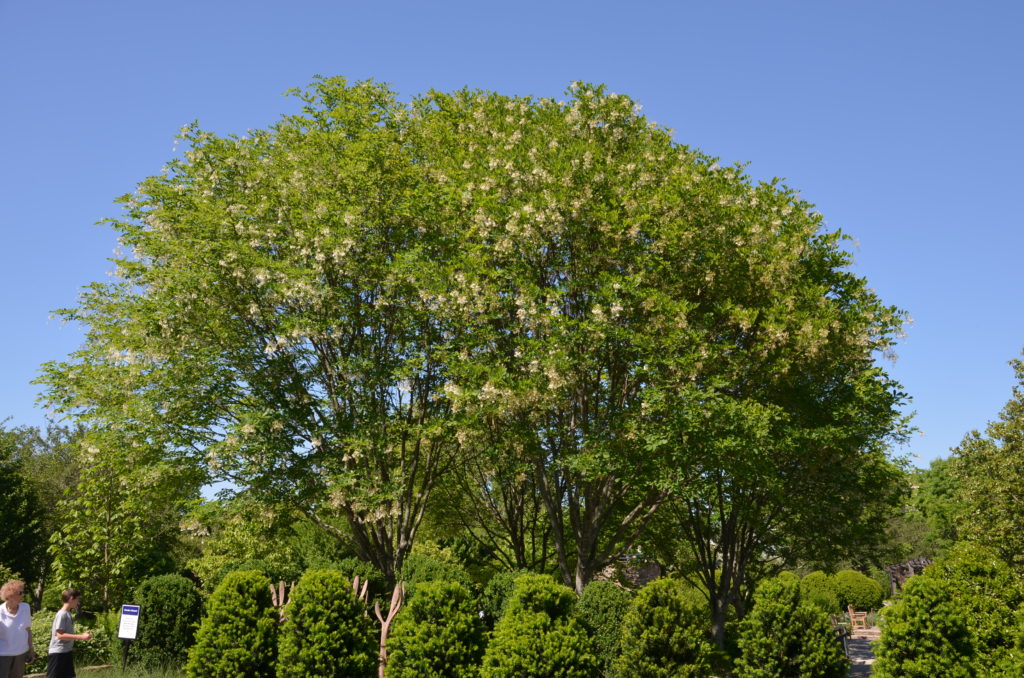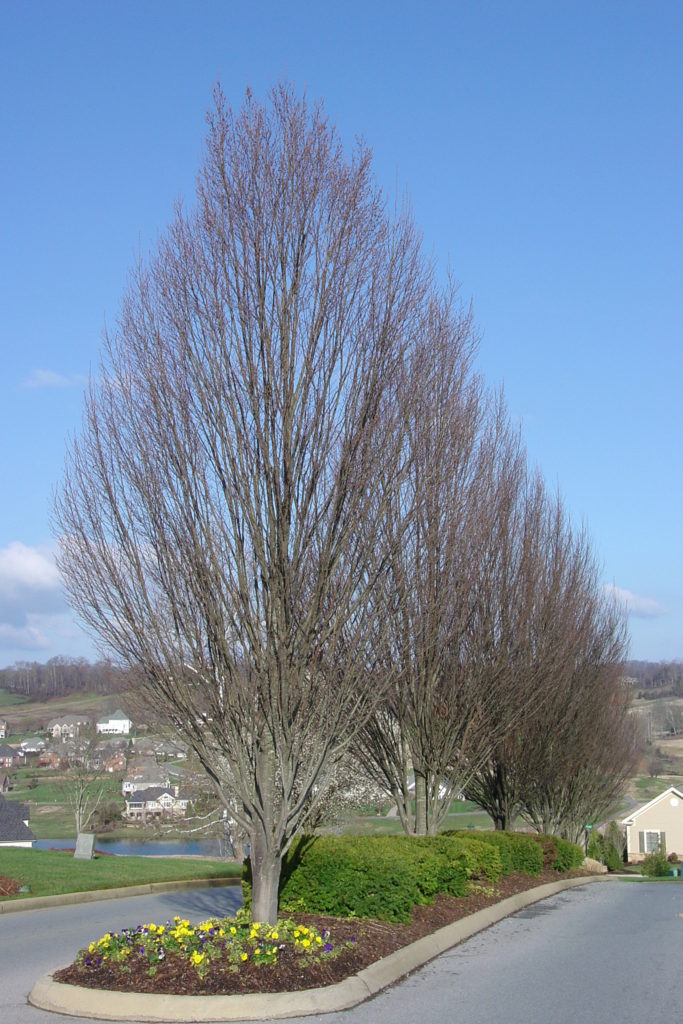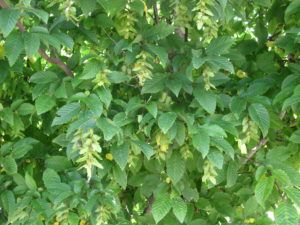
European hornbeam (Carpinus betulus), aka ironwood and musclewood, is an underused tree that is an excellent urban street and park tree. (USDA hardiness zones 4-7). The tree develops a full, dense canopy and little maintenance requirements. The species typically grows 40-60 feet (less frequently to 80 feet) tall with a pyramidal to oval-rounded crown.
Its dense summer foliage is medium green, to 4 inches in length with little susceptibility to foliar diseases and insects. In the fall foliage turns yellow-orange. Some leaf retention over winter months is likely. Trunks have smooth gray bark and distinctive muscle-like fluting. Flowering catkins are visible in early spring before the foliage emerges. Male catkins are yellowish and female catkins are greenish. Fruits are small nutlets in 3-lobed bracts that appear in late summer.
The tree is commonplace in landscapes across Europe as a street tree, privacy screens and windbreaks, and in topiary forms. Hornbeam adapts to a wide variety of soils as is tolerates hot and dry conditions once established after 2 years. Full to partial sun is ideal, although tree will tolerate partial shade. The species tolerates drought and short term flooding. It prefers well-drained/loamy, sandy or clay soils with an acidic pH. Plant where the soil stays cool. Annual mulching is an added plus.
Dense, compact and narrow when young, developing an upright oval crown with maturity. Long, thick, corrugated dark green foliage is resistant to insects and diseases and turns a pleasing yellow in fall. Handsome gray fluted bark. An excellent choice for hedging and windbreaks.
Annual fertilization of young trees is recommended, not so much for older trees. Disease and pest free although powdery mildew. Japanese Beetles may slightly damage the foliage, but rarely needs pest control. Little or no pruning is generally required.
‘Fastigiata’ displays a narrow, columnar form to 35 – 40 feet tall and 25 – 30 feet wide. This cultivar is more available in U.S. nurseries than the species.
‘Columnaris’ is stately and extremely formal-looking, with a limbed-up trunk, strong central leader, and branches arranged tightly near the trunk.
‘Frans Fontaine’ is a narrowly columnar form that grows 35 feet high and 20 feet wide.



 Posted in
Posted in 
